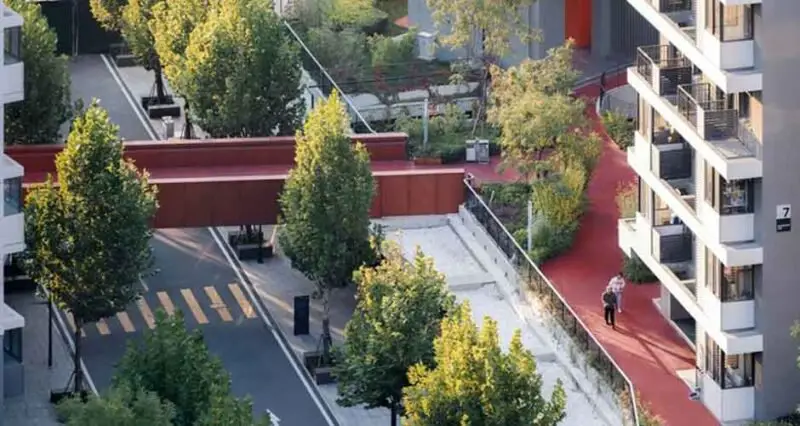
In the heart of bustling cities around the globe, there’s a movement transforming the fabric of urban life. It’s a revival, a renaissance of sorts, breathing new life into old bones and creating vibrant, contemporary spaces where history and modernity blend seamlessly. This movement isn’t just about preserving the past; it’s about imagining the future, making cities more livable, sustainable, and inclusive for all. Let’s dive into the world of urban renewal, exploring how innovative approaches are reshaping our cities.
Reimagining the Urban Landscape
Urban renewal is a journey of transformation, turning neglected areas and aging buildings into thriving communities and cultural hubs. It’s about seeing the potential in the overlooked, finding beauty in the derelict, and, most importantly, creating spaces that reflect the dynamic spirit of city life. Among these transformative efforts, apartment renovations stand out as a testament to the power of innovative design and thoughtful restoration. These projects not only revitalize buildings but also breathe new life into urban neighborhoods, fostering a sense of community and belonging.
The Green Revolution: Urban Spaces Reborn
At the forefront of urban renewal is the green revolution, a push towards sustainability that’s reshaping cities across the world. Rooftop gardens, vertical green walls, and urban farms are turning concrete jungles into lush, green oases, improving air quality, and offering residents a slice of nature amidst the asphalt. This movement goes beyond aesthetics; it’s about creating eco-friendly urban environments that promote health, well-being, and resilience against the impacts of climate change.
Public Spaces: The Heartbeat of the City
Public spaces are the lifeblood of any city, offering places for community, culture, and relaxation. Urban renewal projects are transforming these spaces, making them more accessible, welcoming, and vibrant. From revitalizing old parks to creating new public plazas, these initiatives encourage social interaction, cultural expression, and physical activity, contributing to the overall quality of urban life.
The Role of Art in Urban Renewal
Art has the power to transform spaces and inspire people, and it’s playing a crucial role in urban renewal. Street art, public sculptures, and interactive installations are turning city walls and empty lots into open-air galleries, celebrating local culture and history while fostering a sense of identity and pride. These artistic interventions not only beautify the city but also provoke thought and dialogue, making art an integral part of the urban fabric.
Preserving History While Embracing the Future
One of the most challenging aspects of urban renewal is balancing the preservation of historical buildings with the need for modernization. Architects and urban planners are finding creative ways to restore historic facades while updating interiors with contemporary design and technology. This approach ensures that cities retain their unique character and heritage while providing spaces that meet the needs of today’s urban dwellers.
Housing: Affordable and Inclusive
A key goal of urban renewal is to create housing that’s both affordable and inclusive, ensuring that city living is accessible to everyone. Innovative housing projects are incorporating mixed-use developments, co-living spaces, and adaptive reuse of old buildings to provide a variety of housing options. These initiatives not only increase the housing stock but also promote diversity and inclusivity, making cities more vibrant and dynamic.
Connectivity: Weaving the Urban Fabric
Connectivity is essential in modern cities, and urban renewal is focused on creating networks that link neighborhoods, green spaces, and public areas. Improved pedestrian pathways, bike lanes, and public transport options make it easier for residents to navigate the city, reducing reliance on cars and fostering a more active, sustainable lifestyle. By enhancing connectivity, urban renewal projects are making cities more cohesive and accessible.
The Power of Community Engagement
At the heart of successful urban renewal is community engagement. Involving local residents in the planning and development process ensures that projects meet the needs and desires of the community. Public workshops, town hall meetings, and online platforms offer opportunities for feedback and collaboration, making urban renewal a collective effort. This inclusive approach fosters a sense of ownership and pride, ensuring that the revitalized spaces are embraced and cherished by the community.
Urban renewal is more than just a series of construction projects; it’s a holistic approach to city living that prioritizes sustainability, inclusivity, and community. By reimagining public spaces, preserving historical heritage, and embracing modern design, cities are becoming more livable, vibrant, and resilient. As we continue to craft contemporary spaces in the heart of the city, let us remember that urban renewal is a journey, one that requires vision, creativity, and collaboration. Together, we can build cities that not only reflect our present needs but also anticipate our future dreams.

